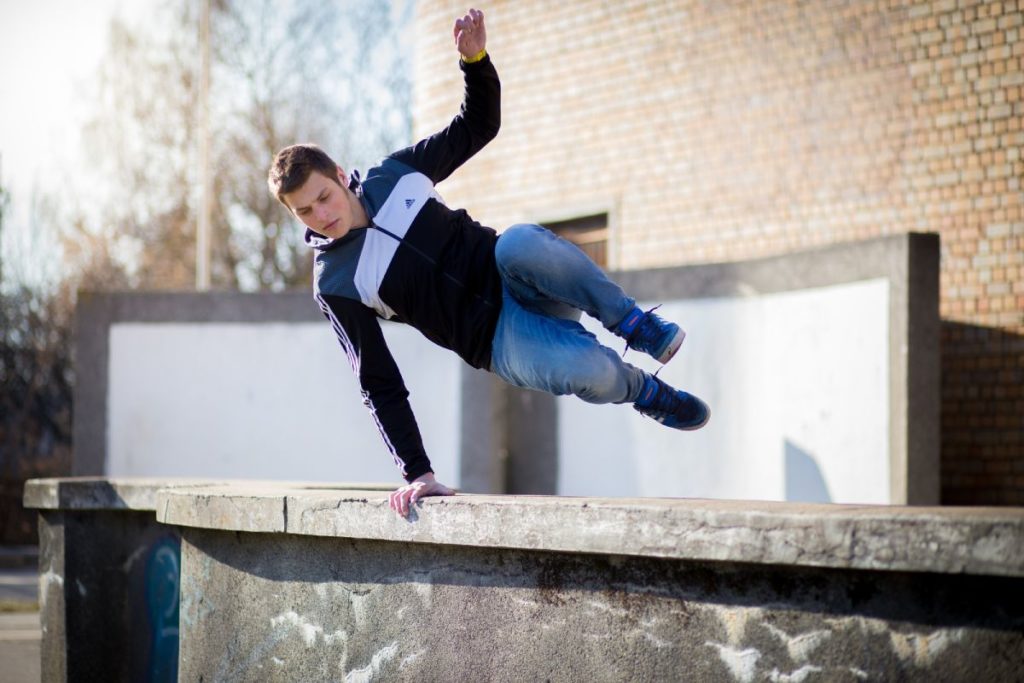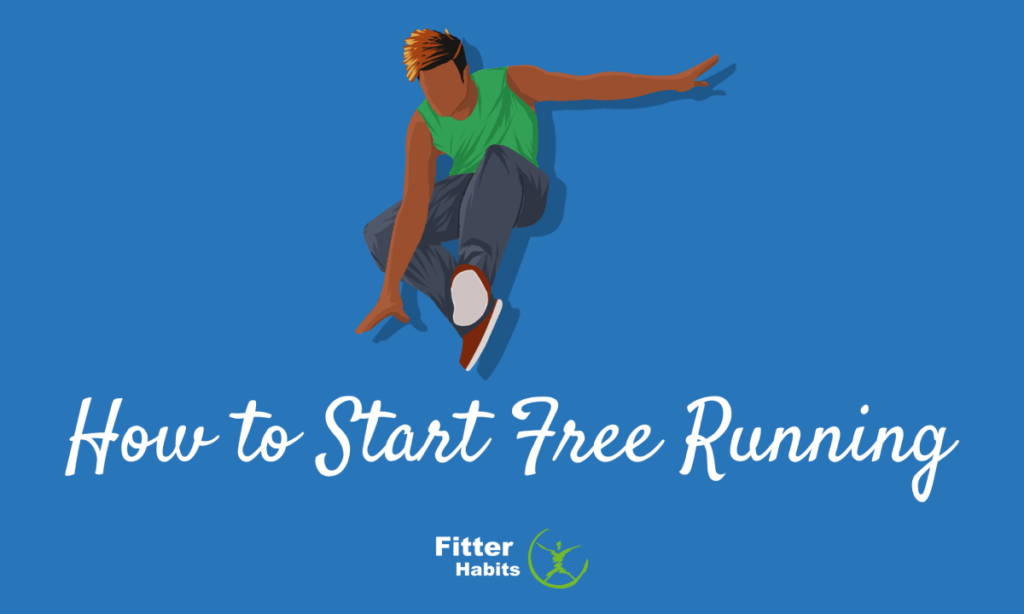If you’re looking to take your running exercises to new extremes, then this how to start free running guide may be a great starting point!
Do you often find yourself feeling bored on your everyday run? If so, then it may be time to take your running workout to the next level with a sport known as free running. Specifically, free running is an activity that combines running with the art of expressing oneself through jumps, vaults, gymnastics, and other exciting moves.
Taking up free running can be a great way to add a little variety to your everyday workouts while also building up other muscle groups and having some fun in the process. Of course, if you’ve seen experienced free runners do their thing, you may be feeling a little intimidated about the thought of getting started.
Fortunately, there are some basic tips you can follow to immerse yourself in the world of free running in no time!
Contents
Parkour vs. Free Running: What’s the Difference?

First, it’s important to understand the difference between parkour and free running. Oftentimes, these terms are used interchangeably. While they are very similar activities, parkour and free running are not the same thing.
Specifically, free running is a variation of parkour that was created to be more inclusive. Parkour was originally developed based on the obstacle courses used in military training. This method involves getting from one point to the next as quickly and efficiently as possible.
Free running, on the other hand, is not as much about speed and efficiency as it is about grace and expression. For this reason, free running tends to incorporate some “flashier” moves and vaults. This sport encourages its participants to express themselves and have fun while getting from point A to point B.
Getting Started With Free Running: Tips for Beginners
Step 1. Begin With the Right Gear

Before you can start free running, there is some basic gear that you’ll want to have in order to optimize your performance and protect yourself from injuries.
This includes a great pair of running shoes with plenty of tread; this will help your feet maintain a solid grip on a wide range of surfaces. When selecting shoes for free running, a great fit is also important, so make sure you know how to properly measure your feet to determine your current shoe size.
In addition to the right shoes, you’ll also want to have some athletic clothing that is not too restrictive and allows for free range of motion. Many free runners also like to wear gloves so as to protect their hands while performing vaults and other moves on rough surfaces.
Step 2. Research Local Free Running Groups
If you live near a major city, there’s a good chance that you can find local free running groups that meet regularly. Joining a local free running group can be a great way to see free runners in-action first-hand, which can give you a better idea of how many of the most popular moves and vaults are performed.
Joining a free running group can also provide you with some guidance as you get started. If you can find a more experienced free runner to take you under his or her wing, you may be able to receive some helpful one-on-one training. At the very least, training with a local free running group can give you a sense of camaraderie and keep you motivated throughout your journey.
Step 3. Work on Your Overall Fitness
Many free running moves require a decent level of physical fitness. With this in mind, you’ll probably want to work on your overall fitness before you really dive into the world of free running—especially if you’re not in the greatest shape to begin with.
Step 4. Practice, Practice, Practice
One of the biggest challenges of free running is learning how to pull off the “flashy” vaults, flips, and other moves that make this sport so special. This is where practice comes into play. You simply cannot expect to become a successful and graceful free runner without setting aside a lot of time to practice.
It can be helpful to begin by watching videos of experienced free runners online. This can give you a better feel for the exact form and technique that is used for many popular moves and vaults. From there, you may be able to practice these in the comfort of your own home or even locally.
Even with regular practice, however, it’s important to understand that it may take 100 attempts to pull off a particular move. With this in mind, free running is not something you can expect to perfect overnight! Remember that it has taken years for most expert free runners to get where they are.
The Final Word on How to Start Free Running
If you’re looking for a way to incorporate more excitement and self-expression into your runs, then taking up free running as a hobby may be a great idea. With the right gear, a little guidance, and a lot of practice, you can begin pulling off wall runs and other complex moves like a professional. Just be sure to follow some common-sense safety measures and respect your body’s limits as you get started with this activity!
FAQs About How to Start Free Running
What does free running mean?
Free running is a sport or activity that involves getting from point A to point B using a combination of traditional running and other moves, such as vaults and acrobatics.
How do I start free running?
Free running is generally not something you should dive into without first doing some research and making sure you have the right gear. It can be helpful to join a local free running group and begin training with them for proper guidance. From there, setting aside time to practice special moves and vaults can go a long way in building your skill, as can working out to improve your overall fitness and endurance.



